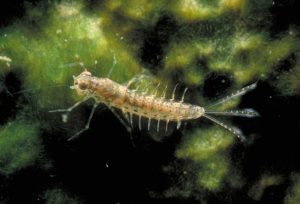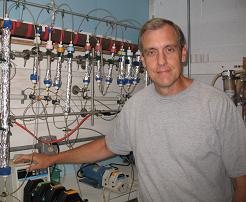Stroud Water Research Center Patents
The Parthenogenetic Mayfly, Centroptilum triangulifer

In 1982, scientists at Stroud Water Research Center discovered a parthenogenetic mayfly and immediately recognized that Centroptilum triangulifer held significant possibilities for scientific research.
Most stream insects have relatively long life cycles, are difficult to grow under laboratory conditions, and will only mate in the wild. But C. triangulifer consists entirely of females who produce viable eggs without mating, have a one-month life cycle, and are easily cultured in the lab.
Like all mayflies, it is extremely susceptible to pollution, making it the perfect candidate to become both the sensitive “canary” and the accommodating “white rat” of the aquatic testing world.
After Bern Sweeney and David Funk had confirmed that the species reproduced as clones, they worked with Laurel Standley to test its use in evaluating toxic substances in streams. In 1997 the three scientists received the first patent ever granted to the Academy of Natural Sciences.
Bioreactors

As part of a study funded by the Environmental Protection Agency to look at the growth of bacteria in drinking water, Lou Kaplan developed a bioreactor that measures how efficiently bacteria consume dissolved organic matter.
Using his instrument, a water utility can determine the most effective treatment process, measure the results, and monitor the quality of the treated drinking water.
On Feb. 23, 1999, Kaplan was awarded a patent for his reactor and for the method he developed to measure contaminants in drinking water.
